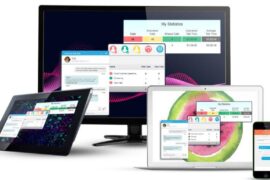Physicians often face the challenge of balancing patient care with administrative responsibilities. One of the biggest time sinks? Clinical documentation. It’s a critical task, no doubt—keeping records accurate and up-to-date is non-negotiable in providing top-notch care. But let’s be real, it can be a drag on doctors’ time and energy.
Documentation Support
Clinical documentation is essential for patient care, ensuring that records are accurate, up-to-date, and comprehensive. Juggling patient care with mountains of paperwork can be overwhelmingly cumbersome, often detracting from the quality of interactions that healthcare providers have with their patients. Something has to give. That’s where Virtual Medical Assistants (VMAs) come into the picture.
They’re not just remote workers; they’re trained professionals who know their way around medical terminology and electronic health record (EHR) systems like the back of their hand. By handling the heavy lifting of documentation, VMAs free up doctors to focus on what they do best—caring for patients. The transition to using VMAs can often streamline practice operations significantly, reducing errors and improving the accuracy of medical records.
Precision in Real-Time Scribing
Imagine trying to keep detailed notes during a patient visit, capturing every word while also engaging with the patient. Tough, right? Scribing, the act of recording patient encounters in real-time, is another area where VMAs help practices with. Traditional in-person scribes can be limited by logistical and space constraints within a clinic or hospital setting. VMAs overcome these limitations by working remotely, offering flexibility and scalability.
With VMAs, doctors can rely on consistent and accurate scribing during patient consultations. This includes documenting patient histories, symptoms, diagnoses, and treatment plans. The immediacy and accuracy of this documentation ensure that doctors have reliable information at their fingertips, leading to better-informed decision-making and improved patient outcomes. This precision not only aids in better care but also protects practices against potential compliance issues.
Easing the Administrative Load
The administrative overload from managing detailed patient documentation, along with scheduling, follow-ups, and prescriptions, can take a toll on physicians, leading to frustration, fatigue, and even burnout. It’s not just about keeping records; it’s about managing appointments, follow-ups, and prescriptions, too. VMAs step in to lift this burden, streamlining processes and restoring balance to the practice. Their involvement helps optimize the daily operations of medical offices, leading to a smoother workflow and increased job satisfaction among staff.
Seamless Team Integration
Integrating VMAs into healthcare teams goes beyond just handling tasks remotely; it involves creating a dynamic where VMAs are seen as essential team members. With proper training, these professionals can plug into existing workflows, ensuring they complement rather than complicate the healthcare provider’s routine. Regular communication and updates ensure that VMAs remain aligned with the team’s goals and patient needs. Working remotely does not hinder their effectiveness; rather, it provides additional flexibility and efficiency that is sometimes hard to achieve with traditional staffing.
Technological Adaptability
The healthcare industry is continually evolving, with new technologies and systems being integrated into daily operations. With the right training, VMAs can swiftly adapt to different medical systems, keep up with technological advancements, ensuring they use the latest tools and EHR systems efficiently. Their training often includes ongoing education about updates in healthcare technology, making them valuable assets in a modern medical practice.
Supporting Practices
Integrating VMAs into healthcare practices isn’t just about reducing paperwork. It’s about enhancing the quality of care, improving the efficiency of practices, and ultimately, making sure that physicians can focus on what’s most important—their patients. As technology and healthcare continue to intertwine, VMAs stand ready to support and advance patient care.































